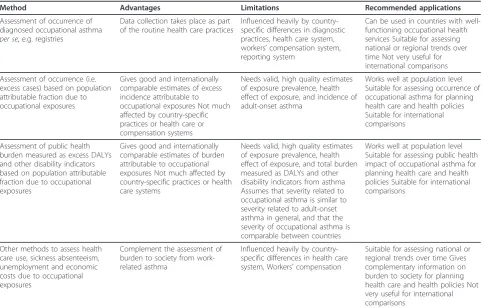Assessment of public health impact of work-related asthma
Full text
Figure

![Figure 2 New cases of occupational asthma in Finland between 1983 and 2002 reported to the Finnish Register of OccupationalDiseases [13]](https://thumb-us.123doks.com/thumbv2/123dok_us/9344966.1921634/5.595.56.540.463.702/figure-occupational-asthma-finland-reported-finnish-register-occupationaldiseases.webp)


Related documents
Methods: Due to the need to improve care, knowledge, monitoring, and education regarding asthma, the Children's Asthma Prevention Program (Programa Infantil de Pre- venção de
Principal Component Analysis of Morbidity and Mortality among the United States Homeless Population: A Systematic Review and Meta-Analysis.. Albert Nguessan Ngo, PhD 1,2* and
NHP (National Health Policy), Healthcare, SWOT analyses, Primary, Secondary, Tertiary health care centers, Commu- nity health center, District hospital medical colleges.. 1
Similarly, the European Society for Clinical Nutrition and Metabolism (ESPEN) provides guidance and research scholarship for nutritional science in clin- ical medicine
In particular, evidence from three ran- domised control trials comparing the risk of HIV infection be- tween circumcised and uncircumcised males in Sub-Sahara Africa suggest that
Aim: Aim of the study was risk assessment of legionellosis for workers in contact with contaminated water aerosol from industrial cooling towers.. Methods: Water samples
According to national policy, fol- lowing the antiretroviral therapy for HIV-positive pregnant women (PW), HIV-exposed infants (HEI) are given antiret- roviral prophylaxis for
Key social and cultural factors of the Time-Pressured Young were time constraints (51.2%), having a long commute (48.8%), peer appearance (43.9%), and adherence to
